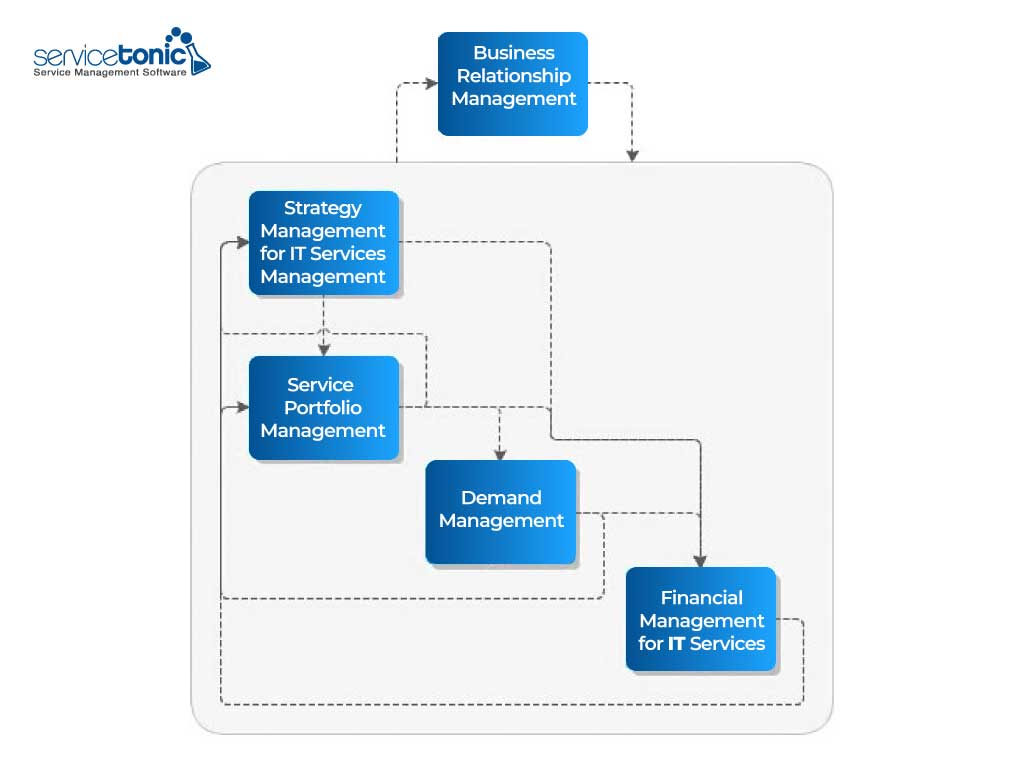Table of Contents
The management of services as a strategic asset
At the center of the service life cycle is the Services Strategy, which promotes the vision of service management as a strategic asset, and not only as an organizational capacity.
A strategy is a plan that shows how an organization will achieve a series of objectives.
The Services Strategy shows how a service provider will use the services to support the achievement of the desired results both by their clients and by themselves.
Goals
- Determine the policies that should guide all activities of the service provider.
- Identify, select and prioritize services. Establish what services should be implemented and why, taking into account the client and market perspectives.
- Ensure that the organization is able to support the cost and risk associated with its service catalog.
Processes

Management of the service strategy
It is responsible for defining and maintaining the perspective (vision and direction), the position (how we compete against other service providers), the plans (how we will go from the current situation to the desired situation) and the patterns (series of actions throughout of the time that must be repeated to achieve the strategic objectives) of the organization with respect to the services and their management.
Financial management
It provides the valuation, in financial terms, of the services and the infrastructure on which they are based, as well as a forecast of their costs.
Model the demand using pricing mechanisms to influence the consumption patterns of customers.
Service portfolio management
Manages investments in new services and the update of existing services taking into account the following key factors:
- Is it a salable service? Why would customers buy it? Why would they buy it from us?
- Is it a profitable service? What are your costs? How would we charge it?
- Is it a workable service? How would it be managed?
Demand management
Its objective is to predict and regulate the demand, so as to optimize and rationalize the use of resources. It is responsible for redistributing the available capacity to provide the service catalog services with the quality agreed upon with the client.
Management of the relationship with the business
Establishes and maintains the relationship between the service provider and the customer. This relationship must be based on a deep knowledge of the client and the needs of your business.
Identify the client’s needs and make sure that the service provider can cover them. The needs of clients will change over time, and the service provider must be able to react and adapt.
“There is no favorable wind for those who do not know where they are going.” – Lucio Anneo Séneca



